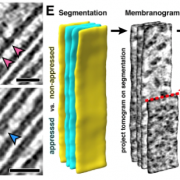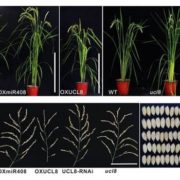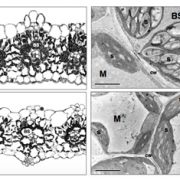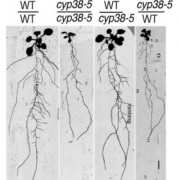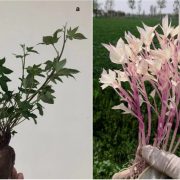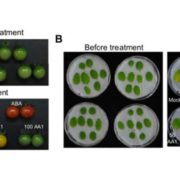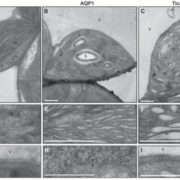Review: Strategies to improve photosynthesis
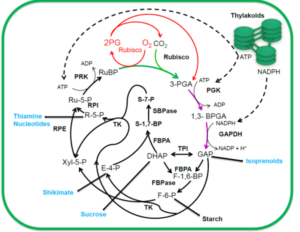 Photosynthesis is the process by which plants assimilate carbon by using light energy. However, with the solar energy conversion efficiency of many crop plants less than 1%, it is inefficient. Therefore, there is interest in manipulating photosynthesis for increased efficiency. Here, Croce et al. identifying nine strategies that have, or could be, implemented to achieve this. At the light absorption level, one strategy is to alter the light that plants absorb to include far-red light, by using cyanobacterial chlorophylls. On the biochemistry side, increasing the expression or activity of sedoheptulose 1,7-bisphosphatase and fructose 1,6-bisphosphate aldolase, which are enzymes of the Calvin-Benson-Bassham cycle, can increase photosynthesis. The authors also suggest some high-risk, high-reward strategies for increasing the activity of RuBisCo, a major rate limiting enzyme in the Calvin-Benson-Bassham cycle. These include engineering carbon concentrating mechanisms from green algae into plants, or replacing native RuBisCo with a higher efficiency version found in red algae. Finally, they consider leaf physiology, such as how increasing stomatal density can increase photosynthesis, although this can also lead to increased water loss. Overall, there are a plethora of strategies which could be used to improve photosynthesis, and these need to be integrated together for the maximum efficiency. (Summary by Rose McNelly @Rose_McN) Plant Cell 10.1093/plcell/koae132
Photosynthesis is the process by which plants assimilate carbon by using light energy. However, with the solar energy conversion efficiency of many crop plants less than 1%, it is inefficient. Therefore, there is interest in manipulating photosynthesis for increased efficiency. Here, Croce et al. identifying nine strategies that have, or could be, implemented to achieve this. At the light absorption level, one strategy is to alter the light that plants absorb to include far-red light, by using cyanobacterial chlorophylls. On the biochemistry side, increasing the expression or activity of sedoheptulose 1,7-bisphosphatase and fructose 1,6-bisphosphate aldolase, which are enzymes of the Calvin-Benson-Bassham cycle, can increase photosynthesis. The authors also suggest some high-risk, high-reward strategies for increasing the activity of RuBisCo, a major rate limiting enzyme in the Calvin-Benson-Bassham cycle. These include engineering carbon concentrating mechanisms from green algae into plants, or replacing native RuBisCo with a higher efficiency version found in red algae. Finally, they consider leaf physiology, such as how increasing stomatal density can increase photosynthesis, although this can also lead to increased water loss. Overall, there are a plethora of strategies which could be used to improve photosynthesis, and these need to be integrated together for the maximum efficiency. (Summary by Rose McNelly @Rose_McN) Plant Cell 10.1093/plcell/koae132


